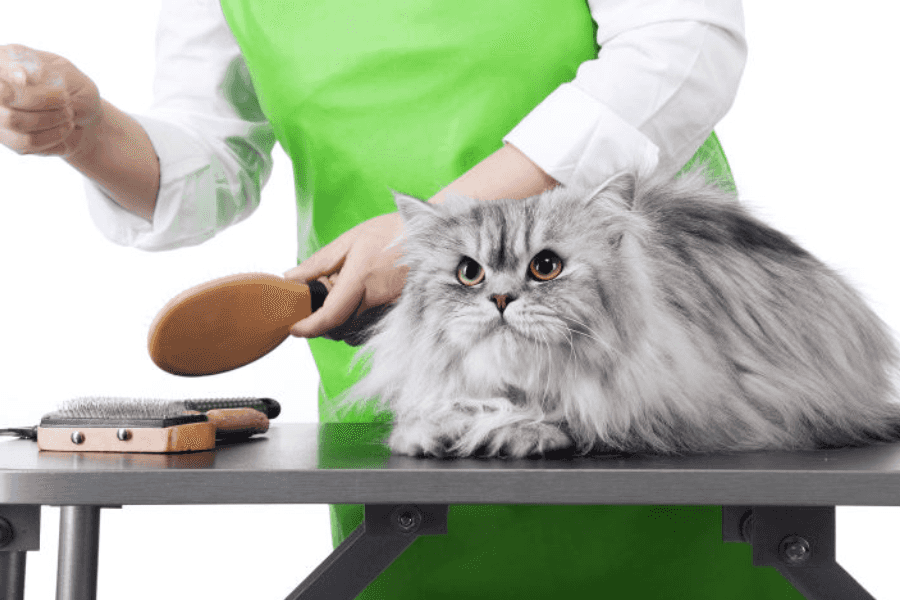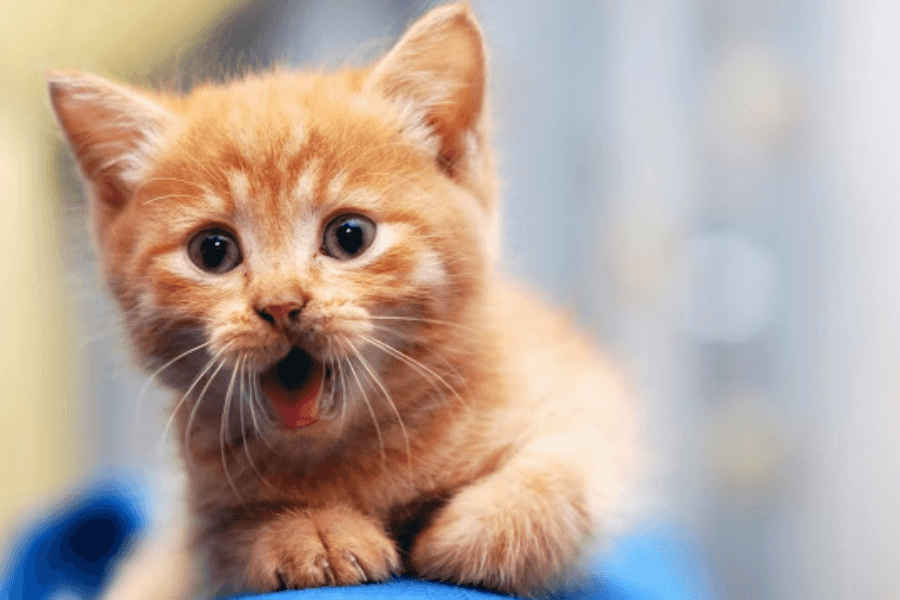How To Prevent A Cat From Shedding? 11 Proven Methods 🐱

If you’re a cat owner, you’re probably familiar with the constant battle against cat hair.![]()
Shedding is a natural process for cats, but excessive shedding can be a nuisance for pet owners. Fortunately, there are several methods to reduce and manage your cat’s shedding.
Here are 11 proven methods to help prevent your cat from shedding excessively.
1. Regular Grooming 🧼

Regular grooming is one of the most effective ways to manage your cat’s shedding. Brush your cat for five to ten minutes at least once a week. If your cat has long hair or sheds heavily, you may need to brush it once every two to three days or more. A soft-bristle brush works well for short- or medium-haired cats, while a wire-bristle brush or specialized cat comb is best for long-haired breeds.
Avoid the face and ears while brushing, and be careful near the sensitive stomach area. If your cat doesn’t tolerate grooming with a brush or comb, try using grooming gloves or mini cat-grooming vacuums. Regular grooming not only reduces shedding but also helps prevent hairballs, which can be a health concern for cats.
2. Proper Diet 🍽️

A nutritious diet is essential for your cat’s overall health, including its skin and coat. Feed your cat high-quality food that lists specific meats (like chicken, beef, or fish) as the first two or three ingredients.
Avoid dry cat foods and low-quality wet foods that contain a lot of grains or other carbohydrates like wheat, corn, and soy, as these ingredients may cause allergic or digestive issues that lead to dry skin and shedding.
3. Omega Fatty Acids 🐟

Omega-3 and omega-6 fatty acids are crucial for keeping your cat’s skin and fur healthy, which can help reduce shedding. You can find these fatty acids in wet cat foods that contain salmon oil or flax oil. Alternatively, you can buy omega fatty acid supplements to feed your cat separately or mix into its food.
4. Hydration 💧

Proper hydration is essential for your cat’s health, including its skin and coat. Make sure your cat has access to fresh water at all times. Dehydration can lead to dry skin, which can increase shedding. Learn more about how much water your cat should drink here.
5. Bathing 🛁

Bathing your cat every one to four weeks can actively reduce shedding. However, most cats don’t like water, so you may need to gradually work your cat up to a full bath. Start by filling a bathtub with three to four inches of warm water and letting your cat’s feet soak for a short period. Gradually build up to getting more of your cat’s body wet each time.
When you’re ready to bathe your cat, use a soap-free, oatmeal-based pet shampoo to lather the fur everywhere but the cat’s face. Rinse the fur thoroughly, avoiding the eyes, nose, and ears, and dry your cat with a large towel. Find out how to bathe a cat without getting scratched here.
6. Cat-Cleaning Products 🧴

If your cat is uncooperative during baths, you can use cat-cleaning products like wipes or sprays that clean your cat’s fur without water. These products can replace baths entirely or be used between baths if your cat gets dirty or starts shedding.
7. Professional Grooming 💇♂️

If you’re unable to manage your cat’s shedding yourself, consider making an appointment with a professional groomer. This may be necessary for cats with long, thick fur or for cats that react aggressively to grooming. You can also consider having a long-haired cat shaved down once or twice a year to decrease shedding.
8. Weight Management 🐾

Overweight cats have more difficulty grooming themselves and are prone to having more loose fur. Help your cat maintain a healthy weight by feeding it the recommended amounts of food and refraining from giving treats. Play with your cat regularly to ensure it gets enough exercise.
9. Flea and Parasite Control 🐜

If your cat is scratching vigorously and shedding more, it could be due to fleas or parasites. Look for dark flea feces near the base of the tail and treat your cat for fleas if you find any. Keep your cat on a monthly flea-control regimen and consult your veterinarian for the best flea-control product.
10. Cat Repellent Spray 🚫

Use a cat repellent spray that’s safe for use on furniture to deter your cat from shedding on surfaces you don’t want it to.
11. Cat Bed 🛏️

Place a comfortable cat bed where your cat enjoys sleeping to help keep the shedding contained to a small area and off your furniture and floors.
FAQ
Why is my cat shedding so much?
Cats naturally shed their fur as a way to regulate their body temperature and remove dead hair. However, excessive shedding can be caused by factors such as poor diet, dehydration, stress, allergies, or underlying health issues. If your cat is shedding more than usual, it’s essential to address any potential causes and consult your veterinarian if needed.
Can I stop my cat from shedding?
It’s impossible to stop a cat from shedding entirely, as it’s a natural process. However, you can manage and reduce your cat’s shedding by following the methods mentioned in this article, such as regular grooming, proper diet, and hydration.
Is cat shedding a sign of illness?
While shedding is a natural process for cats, excessive or unusual shedding can be a sign of an underlying health issue. If your cat is shedding more than usual, has bald spots, or is experiencing other symptoms such as weight loss, lethargy, or changes in appetite, it’s essential to consult your veterinarian.
How often should I groom my cat to reduce shedding?
The frequency of grooming depends on your cat’s breed, age, and health. Generally, you should brush your cat at least once a week. However, if your cat has long hair or sheds heavily, you may need to brush it once every two to three days or more.
Can I shave my cat to reduce shedding?
Shaving your cat can reduce shedding, but it’s not always the best solution. Cats’ fur provides insulation, protection from the sun, and sensory input. If you’re considering shaving your cat, consult your veterinarian or a professional groomer to determine if it’s the right option for your cat.
Remember, shedding is a natural process for cats, and it’s impossible to prevent it entirely. However, by following these methods, you can manage and reduce your cat’s shedding, making your home cleaner and more comfortable for both you and your furry friend.
Tags
Share
Table Of Contents
Related Posts
Quick Links

